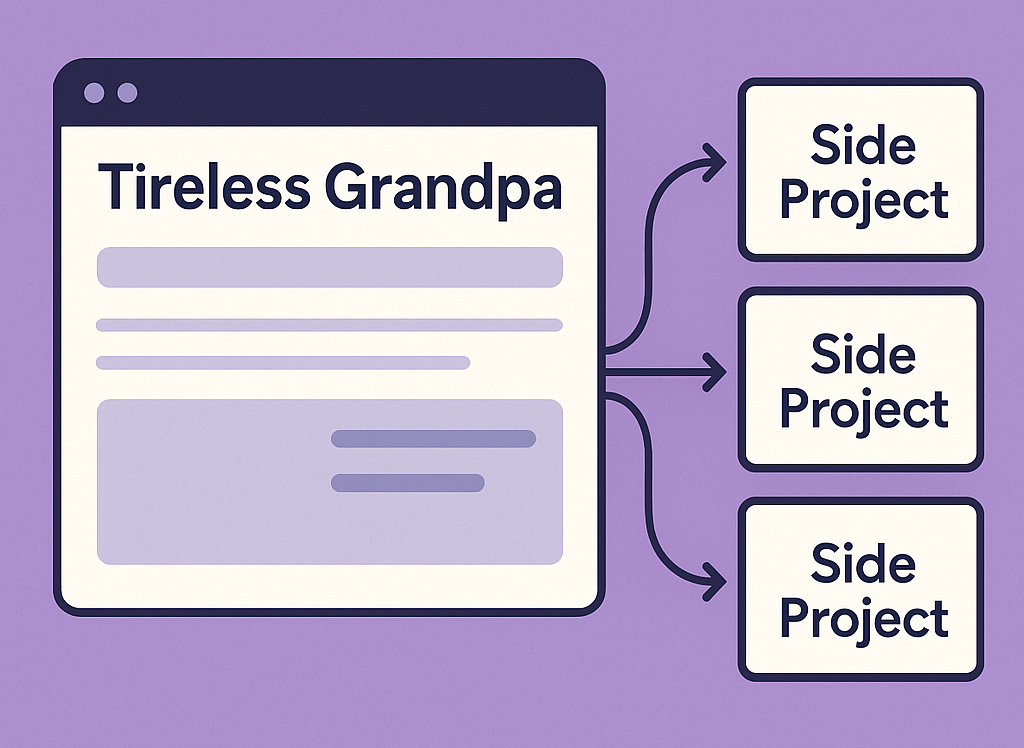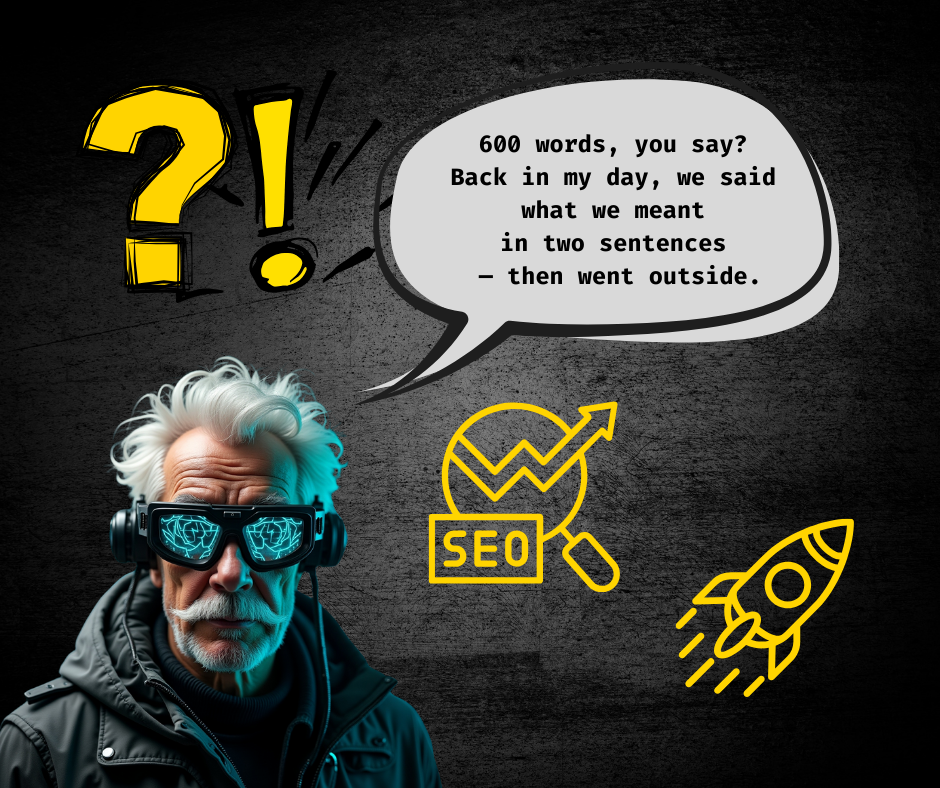In the previous post, I shared the basic structure AI recommended for building this project:
Focus on teaching AI basics, reviewing tools, creating tutorials, and mixing in short-form, light content.
Now it’s time to put some of that into action — but before I start, I want to define a few key things about how I will organize everything.
Splitting the Project Into Two Layers

After thinking about AI’s suggestions, I decided not to keep everything strictly inside Tireless Grandpa.
Instead, I’ll approach it like this:
Tireless Grandpa will remain the main hub, where I document everything I’m doing — including results, lessons learned, and full breakdowns of AI experiments.
Alongside that, I will create smaller, side projects — individual YouTube channels, social media profiles, or content experiments.
These smaller projects will follow the AI’s advice and will focus on creating specific types of AI-generated content based on niches suggested by AI itself.
Why This Makes Sense
This way, I can:
- Test different ideas separately, without cluttering the main Tireless Grandpa platform
- Keep Tireless Grandpa focused on documenting the actual process and results
- Treat every side-project like a mini-case study
In simple terms:
The blog stays educational, and the side-projects are where I experiment, create, and later share the outcomes here.
What Will This Look Like?
For example:
AI might suggest:
“Create a faceless YouTube channel about AI-generated storytelling.”
I’ll set up a dedicated channel and social profiles for that topic.
The content on those channels will be fully AI-assisted — scripts, visuals, even some automation.
Then, I’ll document the process here on the blog — from idea to results.
This gives me the freedom to run multiple experiments without affecting the clarity of Tireless Grandpa as the main documentation space.

Tireless Grandpa = The Basecamp
So, to make it simple:
- TG will stay as the base of all operations.
- The side-projects will be individual experiments, always tied back to this blog.
- Every AI recommendation I choose to follow will be documented here — step by step.
This will allow me to:
✔ Stay organized
✔ Keep things transparent
✔ Show you exactly what happens when you follow AI-generated strategies
A Note on Length, SEO, and Attention Spans

One quick side note before we move on — you might notice some of my posts aren’t very long. That’s not really intentional. That’s just how they come out. I don’t count words — I just stop writing when I feel like I’ve said enough.
While SEO tools (like RankMath) constantly remind me to hit 600+ words for “better ranking,” the truth is: I don’t care much for bloated posts that exist just to please algorithms.
It’s 2025.
Most people don’t have the time — or patience — to read long, keyword-stuffed content that circles around a point for the sake of ranking.
If I can say something clearly in 300 words, I will.
If it takes more, sure — but I won’t stretch it just to hit some imaginary “ideal.”
This blog isn’t about traffic hacks or growth tricks.
It’s about building something real, one step at a time, and sharing what happens along the way — win or fail.
Next Step
In the next post, I’ll show you the first small AI – suggested project — and how I’m starting to put this workflow into motion.
From now on, it won’t be just theory.
It will be simple:
I come across an idea → I shape and build it with AI → and share the outcome through my posts.
Faceless, but not soulless — just one persistent human using AI to turn ideas into something real. One blog post at a time.




